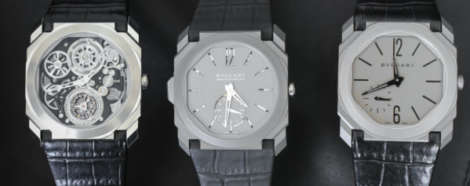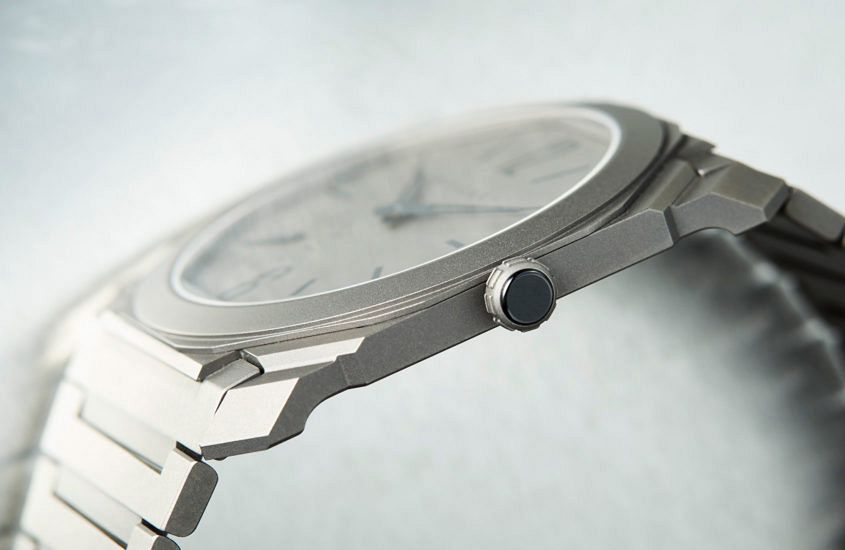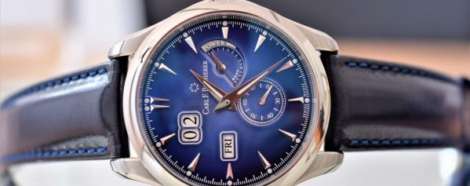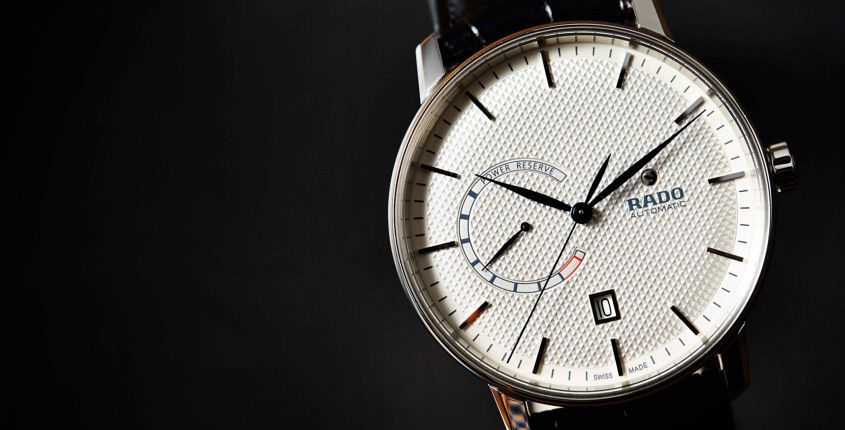VIDEO: Play of light – Raymond Weil’s Freelancer Chronograph
 There’s a reason chronographs are one of the most perennially popular watch complications – they add a lot to a watch. Functionality, interesting design elements, and a sense of derring-do, thanks to the chronograph’s close association with the exciting and glamorous worlds of motorsports, aviation and general athletic endeavour. Most importantly though, they add a real sense of tactility, allowing you to interact with – and measure – the passing of time in a meaningful way. And I’ve got to say, I could get used to wearing and using this Raymond Weil Freelancer. The dial and case is a quiet explosion of colour and texture, with a pleasant mix of finishes that not only amp up the dressier aspects of the watch but also ensure that the simple act of checking the time is a mesmerising lightshow. Raymond Weil’s Freelancer Chronograph Automatic Australian pricing Raymond Weil’s Freelancer Chronograph, on leather $3895
There’s a reason chronographs are one of the most perennially popular watch complications – they add a lot to a watch. Functionality, interesting design elements, and a sense of derring-do, thanks to the chronograph’s close association with the exciting and glamorous worlds of motorsports, aviation and general athletic endeavour. Most importantly though, they add a real sense of tactility, allowing you to interact with – and measure – the passing of time in a meaningful way. And I’ve got to say, I could get used to wearing and using this Raymond Weil Freelancer. The dial and case is a quiet explosion of colour and texture, with a pleasant mix of finishes that not only amp up the dressier aspects of the watch but also ensure that the simple act of checking the time is a mesmerising lightshow. Raymond Weil’s Freelancer Chronograph Automatic Australian pricing Raymond Weil’s Freelancer Chronograph, on leather $3895
The post VIDEO: Play of light – Raymond Weil’s Freelancer Chronograph appeared first on Time and Tide Watches.


 Around this time of the year I’m prone to a bit of the old ‘best watch’ game – running through my favourite releases in a particular brand or category. And typically it’s a pretty clear-cut decision for me. Not so with Tudor’s 2017 collection. I’ve found myself going back and forth over two watches pretty much since I first saw them: the Black Bay Steel and the Black Bay S&G. In a way though my indecision makes perfect sense, as these two models are perhaps the two most extreme expressions of the Black Bay line. The Steel is the epitome of Black Bay as rugged tool watch, a space that the brand is very comfortable in. But the S&G is something else entirely. Luxurious, dressy and – depending on who’s wearing it – a little showy. And while it’s not a side of the Black Bay we’re used to seeing, it’s a look that suits the versatile diver exceptionally well. I suspect this isn’t the last time we’ll be seeing precious metals in the Black Bay family …
Around this time of the year I’m prone to a bit of the old ‘best watch’ game – running through my favourite releases in a particular brand or category. And typically it’s a pretty clear-cut decision for me. Not so with Tudor’s 2017 collection. I’ve found myself going back and forth over two watches pretty much since I first saw them: the Black Bay Steel and the Black Bay S&G. In a way though my indecision makes perfect sense, as these two models are perhaps the two most extreme expressions of the Black Bay line. The Steel is the epitome of Black Bay as rugged tool watch, a space that the brand is very comfortable in. But the S&G is something else entirely. Luxurious, dressy and – depending on who’s wearing it – a little showy. And while it’s not a side of the Black Bay we’re used to seeing, it’s a look that suits the versatile diver exceptionally well. I suspect this isn’t the last time we’ll be seeing precious metals in the Black Bay family …
 It’s not too hard to appreciate how thin 5.15mm is in abstract terms – it’s a shade thicker than two 20 cent pieces, FYI – and pictures of the Octo Finissimo Automatic get you a little further along the path to understanding. But short of actually having the watch in your hand or on your wrist, the best way of contextualising just how incredibly slim this watch is is through the medium of video. Luckily, we’ve put this short video review together so you can get a sense of how it wears in glorious HD. The only thing we can’t convey? The way this watch manages to feel as light as a feather and solid as a rock at the same time.
It’s not too hard to appreciate how thin 5.15mm is in abstract terms – it’s a shade thicker than two 20 cent pieces, FYI – and pictures of the Octo Finissimo Automatic get you a little further along the path to understanding. But short of actually having the watch in your hand or on your wrist, the best way of contextualising just how incredibly slim this watch is is through the medium of video. Luckily, we’ve put this short video review together so you can get a sense of how it wears in glorious HD. The only thing we can’t convey? The way this watch manages to feel as light as a feather and solid as a rock at the same time.
 One of the secrets of the Omega Aqua Terra’s success is its versatile charm. In its dark-dialled and gold incarnations it’s super dressed-up, but put it on a leather or rubber strap and it becomes a much more casual proposition. This is a watch that could pull tuxedo duty or go with board shorts (and the 150 metres of water resistance means it’s safe to take swimming) with equal ease. But no matter how you wear it, you won’t find it boring. The flash of the polished hands and applied indices ensure that, as does the shimmering, patterned dial. And then, of course, there are its more functional charms. It’s now a Master Chronometer-certified watch, which means that it is tough and accurate, and, in the larger size, has a nifty quick jump hour that’s super useful for travellers. Flexible style and feature-packed? That’s why we think the Omega Aqua Terra is one of the best contenders for ‘only watch’ status we’ve seen this year.
One of the secrets of the Omega Aqua Terra’s success is its versatile charm. In its dark-dialled and gold incarnations it’s super dressed-up, but put it on a leather or rubber strap and it becomes a much more casual proposition. This is a watch that could pull tuxedo duty or go with board shorts (and the 150 metres of water resistance means it’s safe to take swimming) with equal ease. But no matter how you wear it, you won’t find it boring. The flash of the polished hands and applied indices ensure that, as does the shimmering, patterned dial. And then, of course, there are its more functional charms. It’s now a Master Chronometer-certified watch, which means that it is tough and accurate, and, in the larger size, has a nifty quick jump hour that’s super useful for travellers. Flexible style and feature-packed? That’s why we think the Omega Aqua Terra is one of the best contenders for ‘only watch’ status we’ve seen this year. One of the great paradoxes of the Swiss watch industry is that, broadly speaking, it is locked into a cycle that demands shiny new watch releases (often referred to as novelties) on a yearly basis. Pretty much without exception, these are all watches that are often intended to last a generation or three. What this means is that many watch brands continually offer new case materials, dial colours or combinations of complications to tempt us to change our wristwear. It’s a strong-willed watch lover indeed who can resist this siren call, but really, the latest is not always the greatest. Sometimes it’s a better play to go for timeless, and stylish. Which is where Rado’s Coupole Classic comes in; it is a sensibly sized dress watch with an aesthetic that neatly marries Swiss tradition with the chic industrial design Rado is often associated with. As a result the Coupole Classic is a solid automatic option for everyday duties. It’s simple, but with enough detail in the waffle-style dial, blued hands and power reserve to keep it interesting on the wrist. Rado Coupole Classic Australian pricing Rado Coupole Classic, steel on leather, $2225
One of the great paradoxes of the Swiss watch industry is that, broadly speaking, it is locked into a cycle that demands shiny new watch releases (often referred to as novelties) on a yearly basis. Pretty much without exception, these are all watches that are often intended to last a generation or three. What this means is that many watch brands continually offer new case materials, dial colours or combinations of complications to tempt us to change our wristwear. It’s a strong-willed watch lover indeed who can resist this siren call, but really, the latest is not always the greatest. Sometimes it’s a better play to go for timeless, and stylish. Which is where Rado’s Coupole Classic comes in; it is a sensibly sized dress watch with an aesthetic that neatly marries Swiss tradition with the chic industrial design Rado is often associated with. As a result the Coupole Classic is a solid automatic option for everyday duties. It’s simple, but with enough detail in the waffle-style dial, blued hands and power reserve to keep it interesting on the wrist. Rado Coupole Classic Australian pricing Rado Coupole Classic, steel on leather, $2225 When we think Rado, we tend not to think chunky, ’70s-inspired dive watch. We’re much more likely to lean towards chic ceramic minimalism, or perhaps this year’s surprise hit, the Captain Cook. Which is why the HyperChrome 1616 is such a standout, though the impressive 46mm case helps too. Of course, Rado are a brand with a high-tech rep to protect, so don’t expect them to use anything as simple as steel for the case material. Instead they’ve crafted two takes on the theme – one in black ceramic, the other in hardened titanium. The ceramic version is the more modern of the two, lightweight and ultra-hard, thanks to the case, painstakingly crafted from a mix of black ceramic feedstock and polymer binder that’s then injection moulded and sintered at about 1450 degrees celsius. It is then finally given the mix of brushed and polished finishes on the 1616 case. The hardened titanium version is no less impressive (and far more retro in appearance). It has been treated so that it’s four times harder than steel. Add to these hi-tech cases the fact that you get a modified ETA that’s good for 80 hours, and the competitive pricing, and there’s a lot to…
When we think Rado, we tend not to think chunky, ’70s-inspired dive watch. We’re much more likely to lean towards chic ceramic minimalism, or perhaps this year’s surprise hit, the Captain Cook. Which is why the HyperChrome 1616 is such a standout, though the impressive 46mm case helps too. Of course, Rado are a brand with a high-tech rep to protect, so don’t expect them to use anything as simple as steel for the case material. Instead they’ve crafted two takes on the theme – one in black ceramic, the other in hardened titanium. The ceramic version is the more modern of the two, lightweight and ultra-hard, thanks to the case, painstakingly crafted from a mix of black ceramic feedstock and polymer binder that’s then injection moulded and sintered at about 1450 degrees celsius. It is then finally given the mix of brushed and polished finishes on the 1616 case. The hardened titanium version is no less impressive (and far more retro in appearance). It has been treated so that it’s four times harder than steel. Add to these hi-tech cases the fact that you get a modified ETA that’s good for 80 hours, and the competitive pricing, and there’s a lot to…